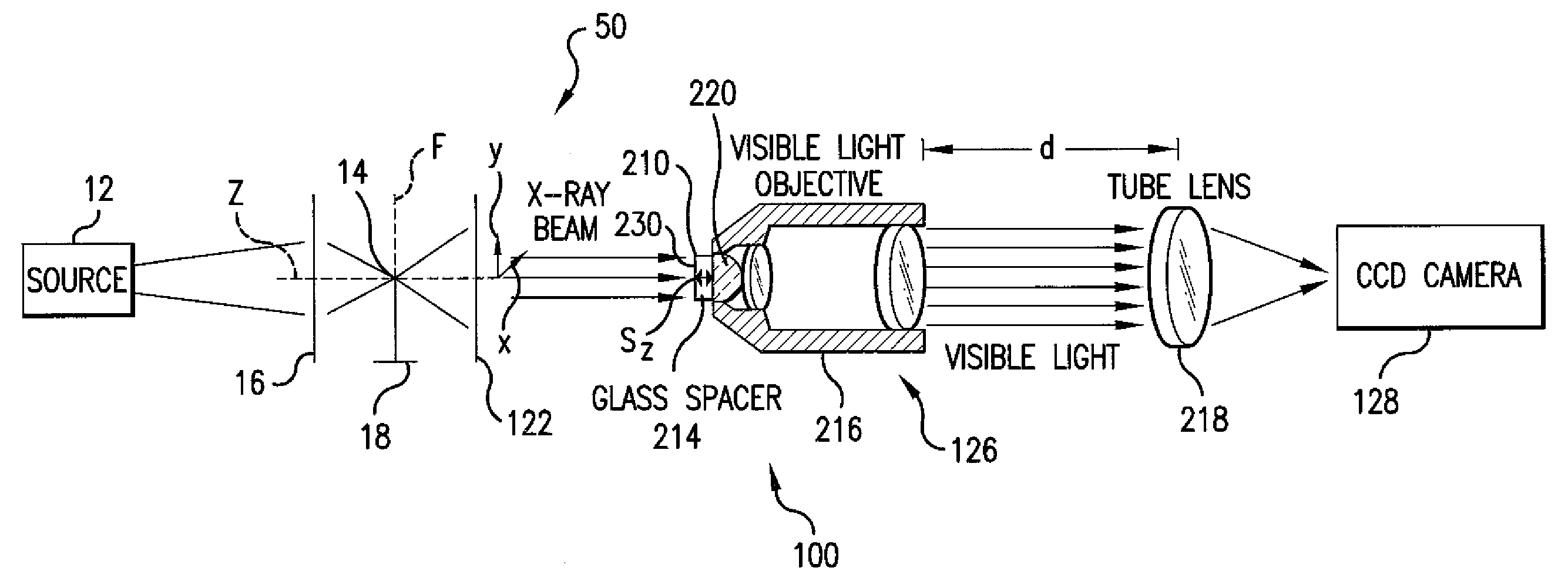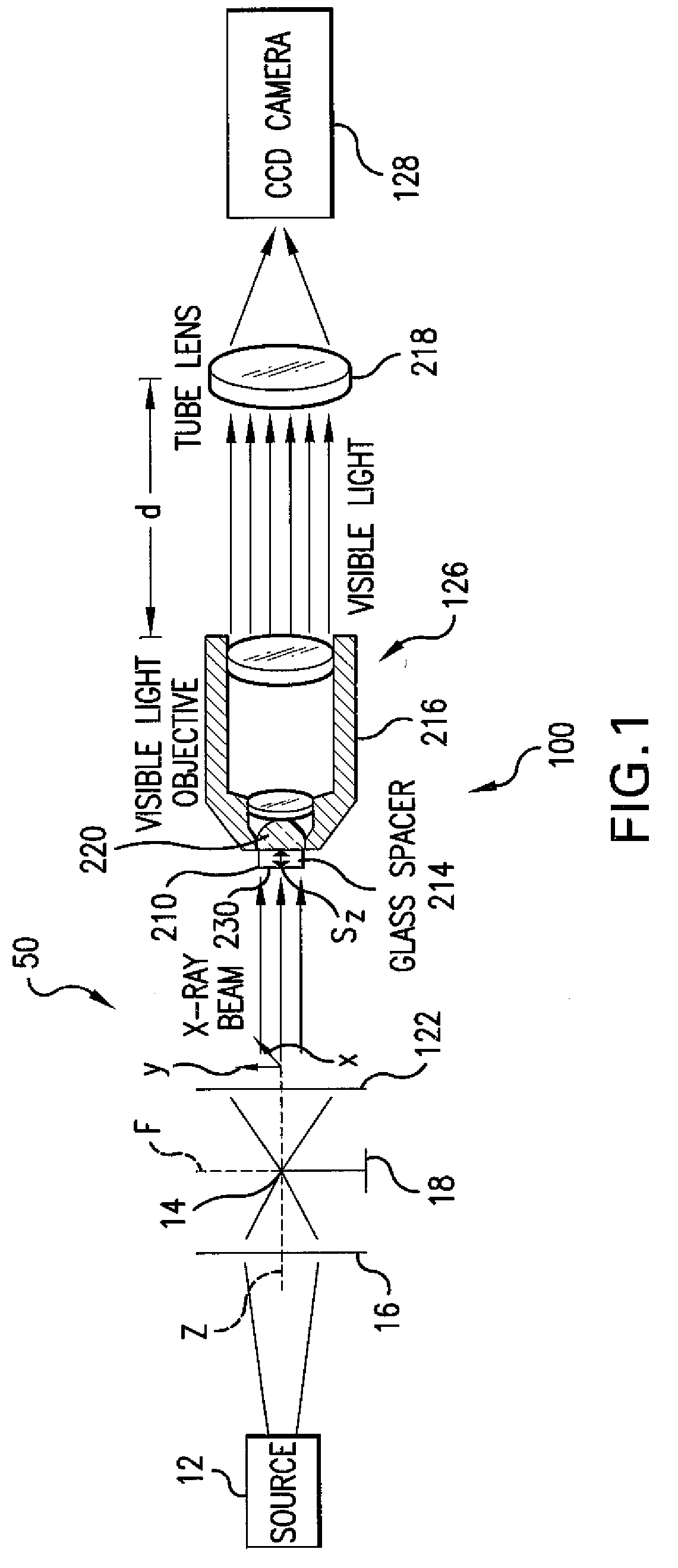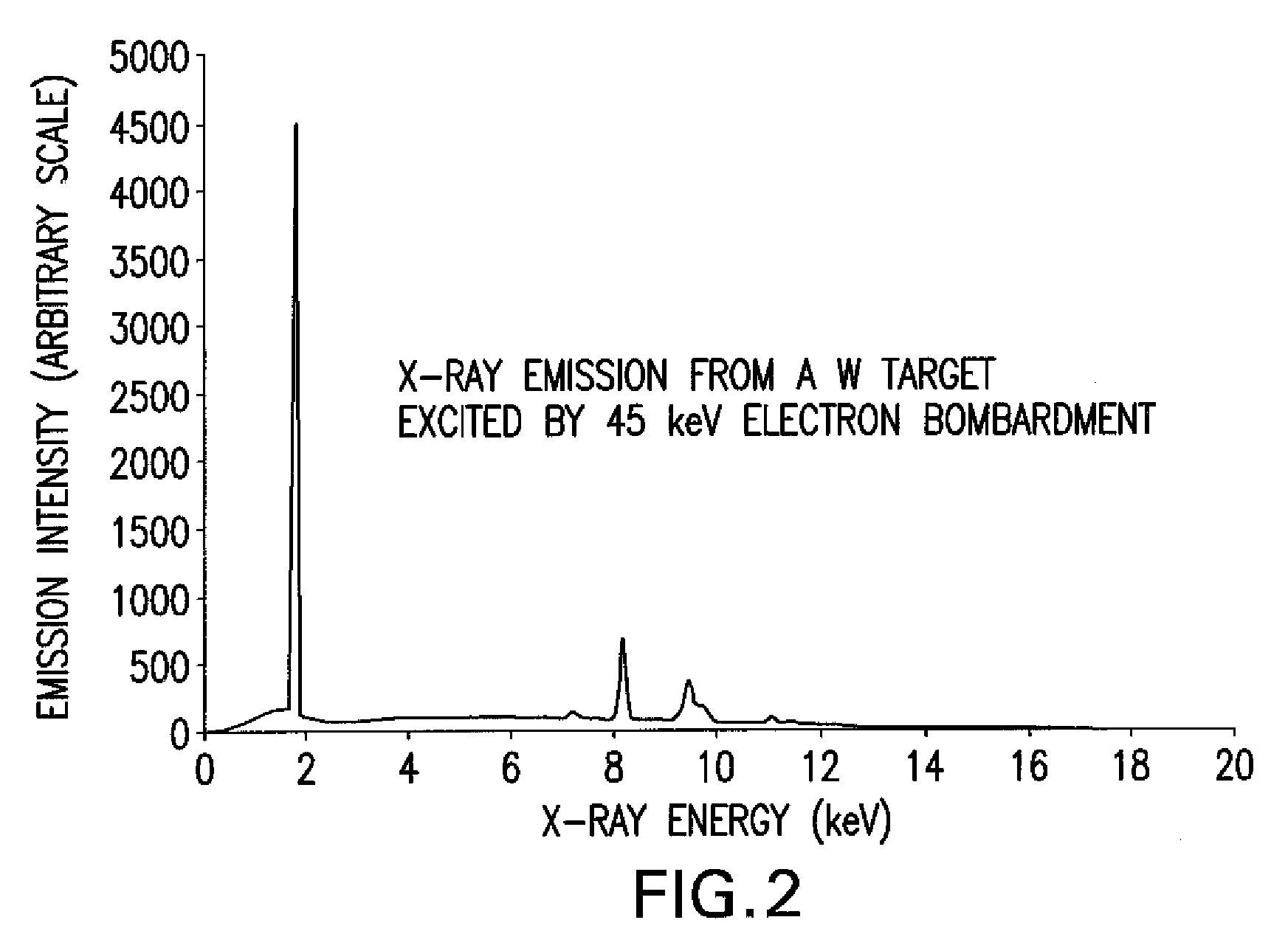Lens Bonded X-Ray Scintillator System and Manufacturing Method Therefor
a technology of x-ray scintillator and bonded x-ray, which is applied in the direction of instruments, radiation measurement, measurement devices, etc., can solve the problems of limited resolution, chemical detectors, and photoresists that typically have extremely high resolution, and achieve compact size and less expensive
- Summary
- Abstract
- Description
- Claims
- Application Information
AI Technical Summary
Benefits of technology
Problems solved by technology
Method used
Image
Examples
Embodiment Construction
[0039]FIG. 1 shows a X-ray microscope optical system 10, including a scintillator optical system 100, which have been constructed according to the principles of the present invention.
[0040] Specifically, a sample 14 is located at the system's focal plane f. It is illuminated preferably by hard x rays in 1-20 kilo-electron-Volts (keV) photon energy range. These x-rays are generated by a source 12 and possibly concentrated by a concentrator 16.
[0041] In the preferred embodiment, the sample 14 is held on a stage that allows for positioning along the optical axis z, and also positioning in the x-axis direction and the y-axis direction. The diverging x-rays from the sample 14 are collected by an X-ray optic. Preferably, a zone plate lens 122 is used. This focuses the radiation onto scintillator material 210.
[0042] The scintillator material 210 converts x-ray radiation into visible-light photons by either phosphorescence (forbidden decay transitions) or luminescence (allowed orbital de...
PUM
 Login to View More
Login to View More Abstract
Description
Claims
Application Information
 Login to View More
Login to View More - R&D
- Intellectual Property
- Life Sciences
- Materials
- Tech Scout
- Unparalleled Data Quality
- Higher Quality Content
- 60% Fewer Hallucinations
Browse by: Latest US Patents, China's latest patents, Technical Efficacy Thesaurus, Application Domain, Technology Topic, Popular Technical Reports.
© 2025 PatSnap. All rights reserved.Legal|Privacy policy|Modern Slavery Act Transparency Statement|Sitemap|About US| Contact US: help@patsnap.com



